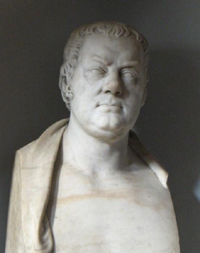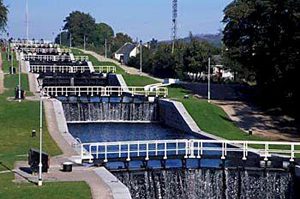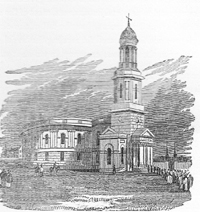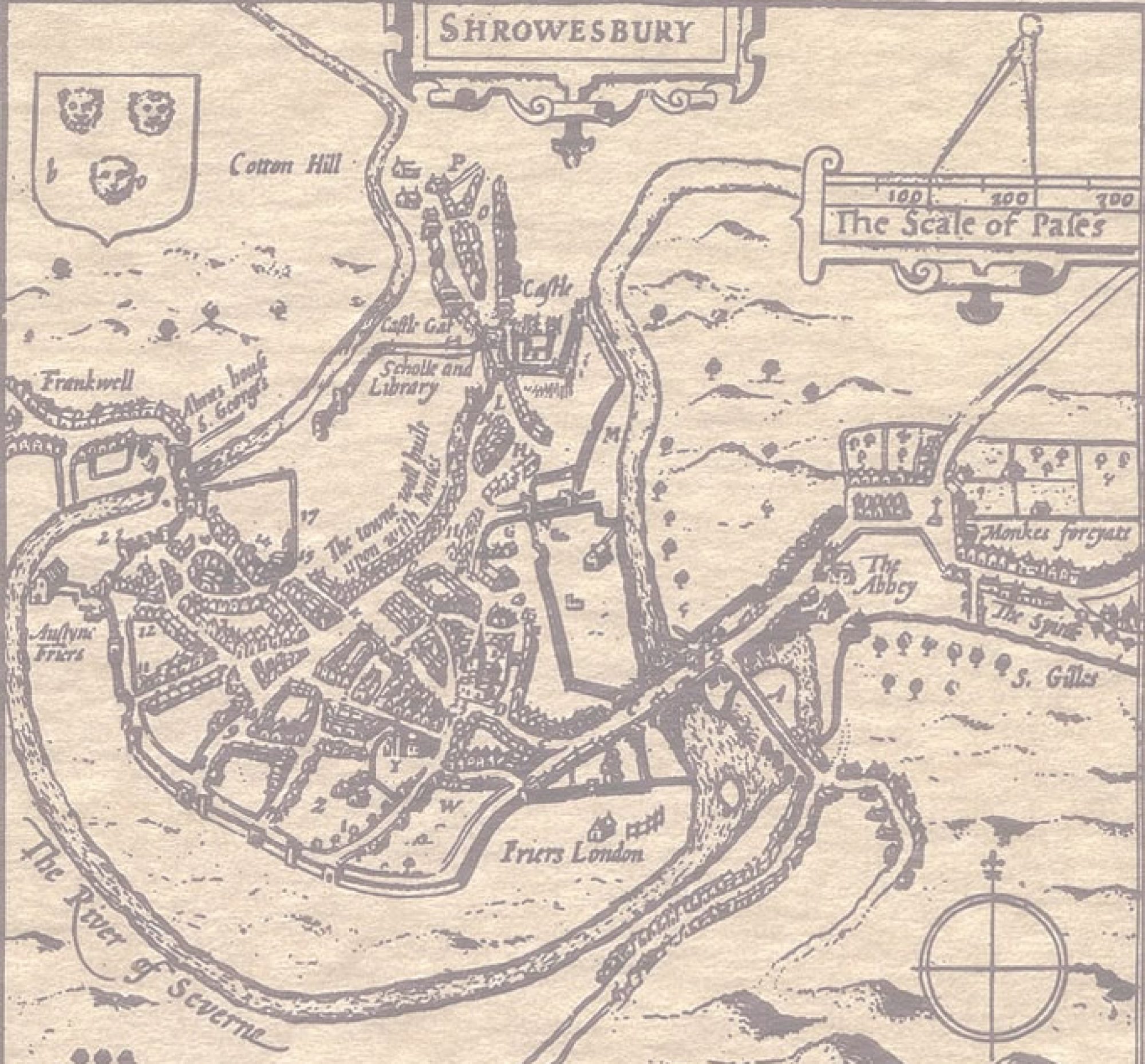
Simpson Square, which is just off the west side of Castle Foregate, Shrewsbury, is one of the newest residential blocks in the town, but its history is much older. It occupies the same site as Simpson’s Square, which was built around 1810, and demolished after the Second World War. Both the old and new squares are named after John Simpson (1755-1815), who deserves to be better remembered.
Simpson was a Scot, probably trained as a mason, whose early career is obscure. He arrived in Shrewsbury in 1790 after the committee overseeing the rebuilding of St Chad’s Church had ‘resolved that the clerk inform Mr Bromfield that his assistance as surveyor to the Trustees is no longer wanted, and that Mr Steuart [the architect] be wrote [sic] to desire he will send down a proper person to succeed him [Bromfield] as superintendent of the work as soon as possible.’ That ‘proper person’ was John Simpson, who was a bit expensive at a guinea a week and three guineas removal expenses from London (this was at least twice the wage of a skilled worker). But he was worth every penny of it, as the complex and novel design of the new church required great skill to execute.

Soon after he arrived in Shrewsbury he met Thomas Telford, and the two men became both close friends. Telford also used Simpson as one of his main contractors for bridges, roads and canals, both in Shropshire and much further afield. It must have been mostly his loyalty to Telford that made him leave the comfort of Shrewsbury each year from 1804 until his death in 1815 for the wilds of Scotland, where he supervised work on the western part of the Caledonian Canal. Here he devised new methods to solve such challenges as building the nine consecutive locks that make up Neptune’s staircase.

Not only was Simpson a practical genius, but he was universally liked and admired. One contemporary called him ‘this most excellent of men’. His obituary in the Shrewsbury Chronicle stated that ‘he was a man of the strictest integrity, generosity and benevolence; a warm and steady friend, a most affectionate husband and indulgent parent.’ Thomas Telford called him a ‘treasure of talents and integrity’, and paid for a bust and memorial tablet to be placed in St Chad’s, on which his wife and daughters expressed their own message of appreciation and grief. His wife and daughters, too, have their own memorials, but that is another story.
